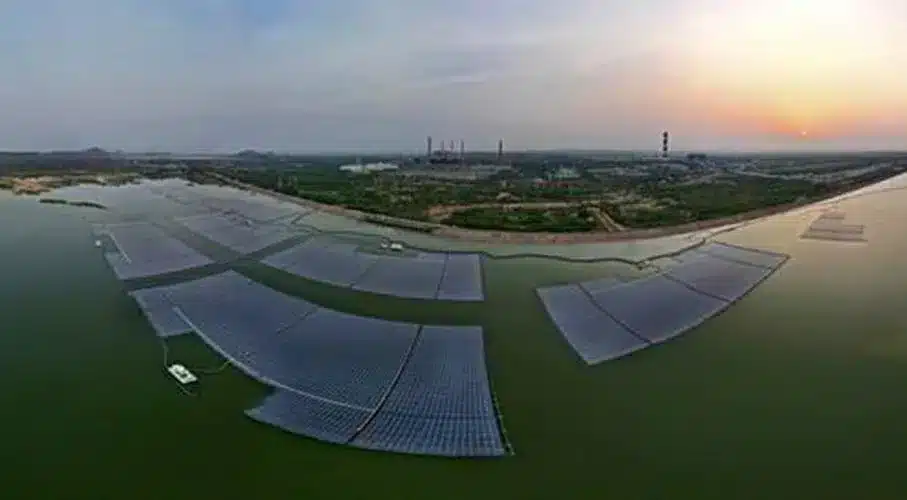India’s largest floating solar power project commissioned

India’s biggest floating solar power plant is up and running. As of July 1, 2022, NTPC has declared Commercial Operation of the final 20 MW of the 100 MW Ramagundam Floating Solar PV Project at Ramagundam, Telangana.
The 100-MW solar project at Ramagundam brings the total commercial capacity of Floating Solar Capacity in the Southern Region to 217 MW. NTPC had previously announced the commercial operation of 92 MW Floating Solar in Kayamkulam (Kerala) and 25 MW Floating Solar at Simhadri (Andhra Pradesh).
Ramagundam’s 100-MW floating solar project boasts cutting edge technology and is environmentally friendly. Over 500 acres of the project’s reservoir will be developed, with a financial impact of Rs. 423 crores through BHEL as an EPC (Engineering, Procurement and Construction) contract. 40 blocks, each with 2.5 MW. There’s one floating platform and 11,200 solar modules in each block. There’s one inverter, a transformer, and a HT breaker on the floating platform. Solar modules are mounted on floaters made of HDPE (High Density Polyethylene).
Cochin Shipyard delivers three Border Out-Post vessels to BSF
The floating system is anchored using HMPE (High Modulus Polyethylene) rope to the dead weights in the balancing reservoir bed. Up to the switch yard, power is evacuated with 33KV underground cables. This project is unique in the sense that all the electrical equipment including inverter, transformer, HT panel and SCADA (supervisory control and data acquisition) is also floating. The system is anchored at the bottom by deadweight concrete blocks.
‘In-Principle’ approval for five new sites for locating nuclear power plants
From environment point of view, the most obvious advantage is minimum land requirement mostly for associated evacuation arrangements. Further, with the presence of floating solar panels, the evaporation rate from water bodies is reduced, thus helping in water conservation. Approximately 32.5 lakh cubic meters per year water evaporation can be avoided. The water body underneath the solar modules helps in maintaining their ambient temperature, thereby improving their efficiency and generation. Similarly, while coal consumption of 1,65,000 Tons can be avoided per year; Co2 emission of 2,10,000 tons per year can be avoided.
Observer Voice is the one stop site for National, International news, Sports, Editor’s Choice, Art/culture contents, Quotes and much more. We also cover historical contents. Historical contents includes World History, Indian History, and what happened today. The website also covers Entertainment across the India and World.

